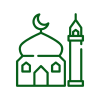🔥 Daoud Khan, Muhammad: Afghan Reformist Leader 🏖️
Daoud Khan, Muhammad (1909–1978), served as the Afghan Minister of Interior (1949–50) and Prime Minister (1953–63). Known for encouraging significant social reforms, he promoted women’s rights, notably permitting them to unveil in 1959, a pivotal move towards their participation in economic life. Following his cousin King Zahir Shah’s rule, Daoud Khan led a coup d’état in July 1973, declaring himself President of the Republic of Afghanistan. His progressive policies came to an abrupt end when he and his family were executed during a communist coup in April 1978.
Etymology and Background§
Name:
- Muhammad: Common Muslim name in many cultures, derived from the Prophet Muhammad [founder of Islam].
- Daoud: Derived from Prophet David, emphasizing leadership and wisdom.
Daoud Khan (داؤد خان) reflects a home-grown leader rooted in traditional Islamic values yet advocating for progressive modernity.
Historical Facts and Dates§
- 1909: Born in Kabul, Afghanistan.
- 1949-1950: Served as Minister of Interior.
- 1953-1963: Prime Minister, known for pushing the socio-economic modernization.
- 1959: Unilaterally allowed women to unveil.
- 1973: Deposed King Zahir Shah and became President.
- April 1978: Executed alongside his family in a coup led by the communist faction.
Cultural Impact§
Women’s Rights:
- Permit to unveil (1959): Revolutionized women’s societal roles, aligned Afghanistan with modernist Islamic movements.
Economic Policies:
- Infrastructure: Encouraged industries and modernization, although his tenure saw mixed economic outcomes.
Synonyms and Related Terms§
Synonyms:
- President Daoud
- Mohammad Daoud Khan
Related Terms:
- King Zahir Shah: Overthrown by Daoud.
- Saur Revolution: The coup leading to Daoud’s execution.
- Republic of Afghanistan: Established by Daoud in 1973.
Quotations§
“We must introduce social reforms while retaining our Afghan identity. Only then can we flourish in the global arena.” —Muhammad Daoud Khan
Trivia§
- Afghan Royalty: He was a member of the Afghan royal family.
- Western Education: Advocated incorporating Western education models.
- Pan-Afghanism: Ideologies reflected pan-Afghan unity and modernity while holding to Islamic principles.
Suggested Literature§
Recommended readings to gain deeper insight into Daoud Khan’s legacy:
- “Afghanistan: A Modern History” by Angelo Rasanayagam.
- “The Wars of Afghanistan: Messianic Terrorism, Tribal Conflicts, and the Failures of Great Powers” by Peter Tomsen.
- “Requiem for an Army: The Demise of the Afghan Military in 1978” by Mohammed Yahya Nawroz.
Quiz Time! 📘§
May this exploration of Daoud Khan inspire you to study the dramatic histories that shape our world, to honor leaders striving for progress amid adversity, and to remember the intricate ties between modernity and tradition in shaping nations.
